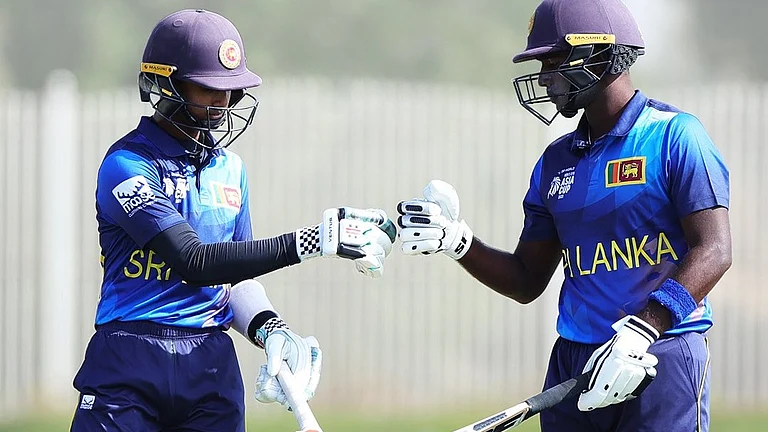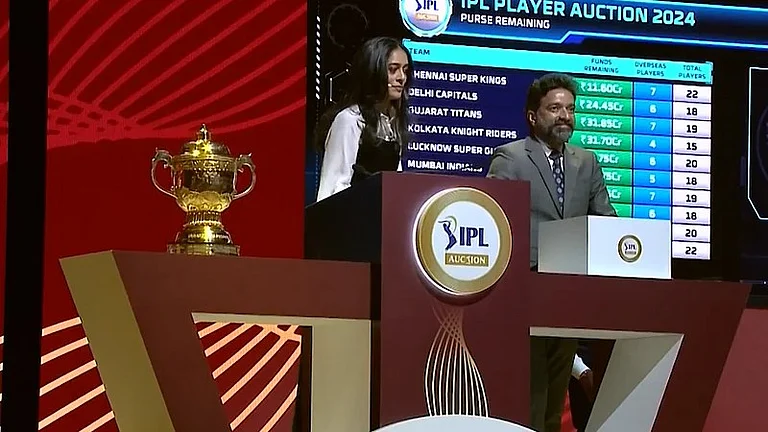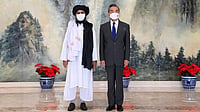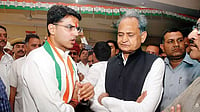The overwhelming response that the ‘Bharat Jodo Yatra’ has been receiving down south has taken political observers by surprise. As the yatra progresses, Rahul Gandhi is emerging as a different leader altogether, energetic, inspiring and popular. The yatra is also benefiting an otherwise moribund Congress in more ways than one. Analysts, however, believe that linking the marathon campaign with the likelihood of Congress winning the elections is not a coherent reading.
To keep its ship afloat in the electoral politics of the country, the Congress needs to win elections to revive and survive, and the ‘Bharat Jodo Yatra’ is just a ‘small and important’ step in the long journey that the party has to endure. In other words, the yatra’s primary aim is not winning the Congress polls but to catapult the party to a place from where it will be in a better position to focus on elections in future.
After Narendra Modi swept to power on an unexpected juggernaut in 2014, Congress lovers and critics, shocked and surprised by the grand old party’s shabby performance in the elections, were faced with an exigent question: will the Congress ever recover? The question, relevant even today, stirred the buzz on newspaper front pages, magazine covers and prime-time television debates. The 137-year-old Congress bandwagon was reduced to a meagre 44 seats in the 543-member Lok Sabha. In every headline, the Congress was humiliated.
In one of the television debates in January 2015, just nine months after Modi took over the reins of power at the Centre, Gardiner Harris, the then South Asia correspondent for the New York Times, unabashedly reduced Rahul Gandhi from a politician to a mere dog lover. “The Congress party,” he told the news anchor, “is going to die if they [Congress] continue to promote Rahul as the man who is going to lead it because he is going to lead it to its death.” The audience erupted in laughter and applause when Harris went on to add, “I’ve heard he is a good man, a dog lover… He is not a politician.”
The media persecution, coupled with the drumbeating by the Bharatiya Janata Party (BJP) and right-wing trolls, succeeded in creating a perception that not only relegated the Congress’ fortunes to the dustbin of history but also created a clown figure out of Rahul Gandhi. Nevertheless, it is also true that the new public perception, amplified by the ruling BJP, was able to sustain and hold its sway over the public discourse for a long time owing to the Congress’ own infirmities and the rot that lies deep within its organisational structure.
Caught unawares, Rahul Gandhi—in a bid to counter the BJP’s divisive politics and agenda—started making a slow turnaround in 2017 as he began participating in social media campaigns, press conferences and public addresses and interactions. “While largely focusing on secular messaging,” wrote Sushil Aaron in 2019, “Mr. Gandhi has burnished his Hindu credentials through a stream of visits to temples to fight the Hindu nationalist charge that his party cared for Muslim minority votes and not for the Hindu majority.”
For the Congress, however, it was important to realise that they cannot outmanoeuvre the BJP with the Hindutva trump card, because, as a party insider succinctly tells Outlook, “Rahul can only visit temples, but Modi can build them, because he is in power and has the resources.” What else was in store for the Congress to reclaim the sheen they once had?

Rahul’s efforts to bring out the party from the gory stalemate seemed to be going in vain as the party kept losing a slew of state assembly elections, including the one in Uttar Pradesh in March 2022. The developments shoved the party into a state of perpetual worry, and in May 2022, nearly 400 Congress leaders huddled together at its brainstorming conclave ‘Chintan Shivir’ in Rajasthan’s Udaipur to figure a way out of the electoral slump. That is where the idea of ‘Bharat Jodo Yatra’ was conceptualised and took a definitive shape.
The Congress has long remained in power. It has groomed and produced able and efficient ministers. Their modus operandi, throughout, revolved mostly around governance and running government affairs. “The ministers sat in chairs and positions of power for successive terms, became efficient in running the government but lost touch with the ground,” a source close to Rahul Gandhi says. He adds, “The focus chiefly remained on running the government and the job of running the party affairs by and large remained in a backseat.” He says further, “When the party is out of power, it needs party workers and well-grounded leaders, not ministers, and the so-called ministers are caught unprepared in a quagmire that demands a different skill set altogether.”
According to the source, the party realises that it needs to engage in a lot of activism and connect to people on the ground, en masse, and all the members of the Congress ought to deliver on these lines. “But some leaders, especially those of the older generation, only want to sit in their cosy cabins,” he says wryly. “They could be good ministers, but they are not efficient leaders and are now lying dormant. We have to come out and hit the roads, meet people,” he adds.
Amid these circumstances, says a young Delhi-based party functionary, ‘Bharat Jodo Yatra’ is not only enabling a massive contact programme for the Congress but also introducing itself once again to the ground. The yatra, he adds, is also effectively rejuvenating the cadres of the party who have long remained dormant. Further, the party is collecting real-time feedback on key issues from the marginalised communities, beleaguered farmers and unemployed youth.
It is true that for the first time in his political career, Rahul Gandhi is now being seen right where he should have always been—among the masses. According to a survey conducted by CVoter, the popularity ratings of Rahul Gandhi have gone up in several states since the advent of the yatra.
Survey figures suggest that the percentage of people in Tamil Nadu, who are ‘very much satisfied’ with him, has shot up from 16.8 just before the beginning of the yatra to 19.4. Similarly, the ratings have gone up for the Gandhi scion from 30.6 per cent to 36.8 per cent in Kerala and from 29.8 per cent to 34 per cent in Karnataka.

Without showing any lack of will and sign of exhaustion, Rahul Gandhi has been walking, darting and sprinting across the streets of Kerala, Tamil Nadu, Karnataka and now Maharashtra, with hundreds of people following suit. Coupled with his fiery speeches, it all has radically changed his image from a ‘pappu’ (gullible fellow) and a political non-entity to a dedicated, charismatic and an accessible leader.
“Seeing Rahul Gandhi hitting the streets and walking with him is elevating the spirits of hundreds of Congress workers,” says Christopher Tilak, the All India Congress Committee secretary, who participated in the yatra when it entered Andhra Pradesh in October. Tilak goes on to add enthusiastically, “Rahul Gandhi’s presence plays a huge role. His speeches, will, composure and even his physical fitness are inspiring the party workers and leaders around him. They are willing and keen to give it all, whatever it takes.” According to him, even the leaders and workers, who are above 65 years, walked for miles. The level of animation and the spirit among the cadres is unprecedented, which gives the party a serious hope.
Since the inception of the yatra, the Congress has maintained that the aim of this campaign is not to win the elections but to rejuvenate the party at the grassroots and spread awareness among the citizens about the issues that the country is grappling with. Senior party leader and Rajya Sabha member Jairam Ramesh had earlier told Outlook that the yatra “is a mass mobilisation campaign, and it is not aiming at the upcoming elections. It is a campaign to unite India against the divisive forces”. The fact that the yatra is not passing through the poll-bound states Gujarat and Himachal Pradesh also corroborates his claim.
Political scientist and author Zoya Hasan says that the yatra is an extremely important mass movement for the Congress. “Whether it will bring Congress any electoral dividends or not, that is a separate question,” she says. “For long there was a question, ‘Where is Congress’? Now that they are on the roads, we are asking will this translate into votes, will it win the elections? The question, though important, is not relevant for assessing the effectiveness of the yatra, which is a mass outreach programme that has stirred up hopes beyond the traditional support base of the Congress,” says Hasan. She adds, “The issue is whether or not the yatra will eventually lead to a revival of the Congress party and a push-back against divisive politics and the slide into authoritarianism.”
Although the yatra is receiving overwhelming support in the South, the real test for the Congress lies in the Hindi heartland, and only time will tell if the yatra will be able to evoke as much response from the people. However, to reap the benefits of the yatra at a much bigger scale, Tilak says, organisational changes should quickly be made. “Rahul Gandhi’s march is making it rain for Congress,” says Tilak. “But to harvest the water, we need containers. Timely organisational changes will give us the containers.”
In the meanwhile, speculation is rife that buoyed by the overwhelming response to its yatra, the Congress is planning a similar campaign next year in the regions between Gujarat and West Bengal.
(This appeared in the print edition as "Poised to Make a Mark")


























